We have put together a guide to the eight types of sharks in Aruba. Additionally, we’ve distilled all the crucial knowledge you’ll require in the event of an unplanned shark encounter.
Since Aruba has the sunniest weather in the Caribbean, it should come as no surprise that it is a top vacation spot on many travelers’ lists. However, the potential for shark attacks is a common worry.
Although there are sharks in Aruba, they are mostly found in the deep ocean, making swimming and snorkeling in the shallow waters and on the white, sandy beaches safer. The Caribbean Sea is home to more than 20 different species of sharks, including reef sharks, whale sharks, and hammerhead sharks.
Read the article and learn what kinds of sharks will appear in Aruba, and how to keep ourselves safe.
Are There Sharks In Aruba?
Although there are sharks in the Caribbean waters near Aruba, attacks on people are incredibly uncommon.
Since 2015, there has only been one reported shark attack in Aruba, according to the Shark Research Institute. That indicates that there have been no reports of shark attacks in the nation since 2016 up to the present.
Common Species Of Sharks In Aruba
There are only three common shark species in Aruba, despite the fact that the Caribbean is home to a wide variety of shark species. Hammerhead sharks, whale sharks, and reef sharks are these common species.
Even though sharks are more likely to be in deeper waters, you might still run into them close to the beaches. In order to recognize them quickly, it is worthwhile to have some knowledge of each one.
Caribbean Reef Sharks
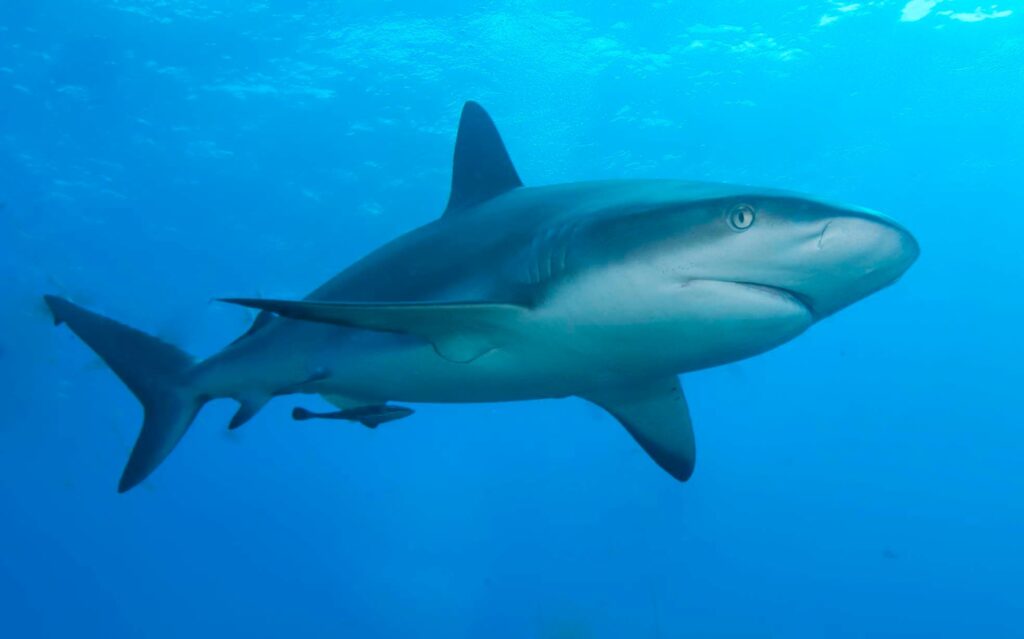
The most prevalent type of shark in the waters near Aruba is the Caribbean reef shark. Additionally, they are one of the most significant species on the planet, according to the World Wildlife Fund, due to their significant contribution to the marine ecosystem.
On their dorsal side, they are typically white to yellow in color, and on their ventral side, they are typically dark gray to gray-brown in color. Around Aruba, reef sharks have a maximum length of about three feet.
Hammerhead Sharks
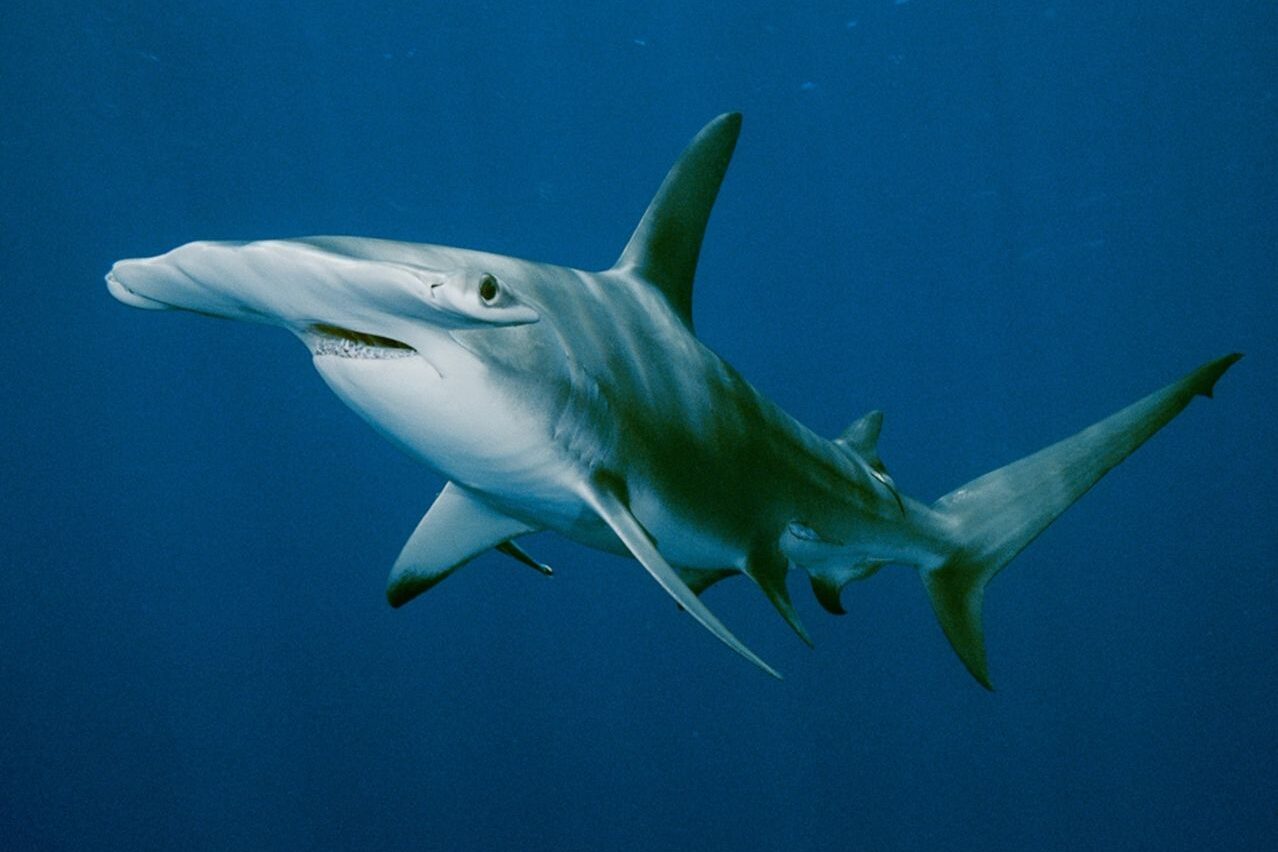
The name “hammerhead” refers to the distinctive shape of the shark’s head, making it one of the most easily recognized shark species. These sharks have been spotted in the Caribbean waters near Aruba, where they are known to frequent tropical waters. They typically have gray hues with a tinge of green.
When seen from below, their white bellies enable them to blend into the background, allowing them to sneak up on the prey. Although they generally resemble hammers in shape, there are some species-specific differences.
Whale Sharks
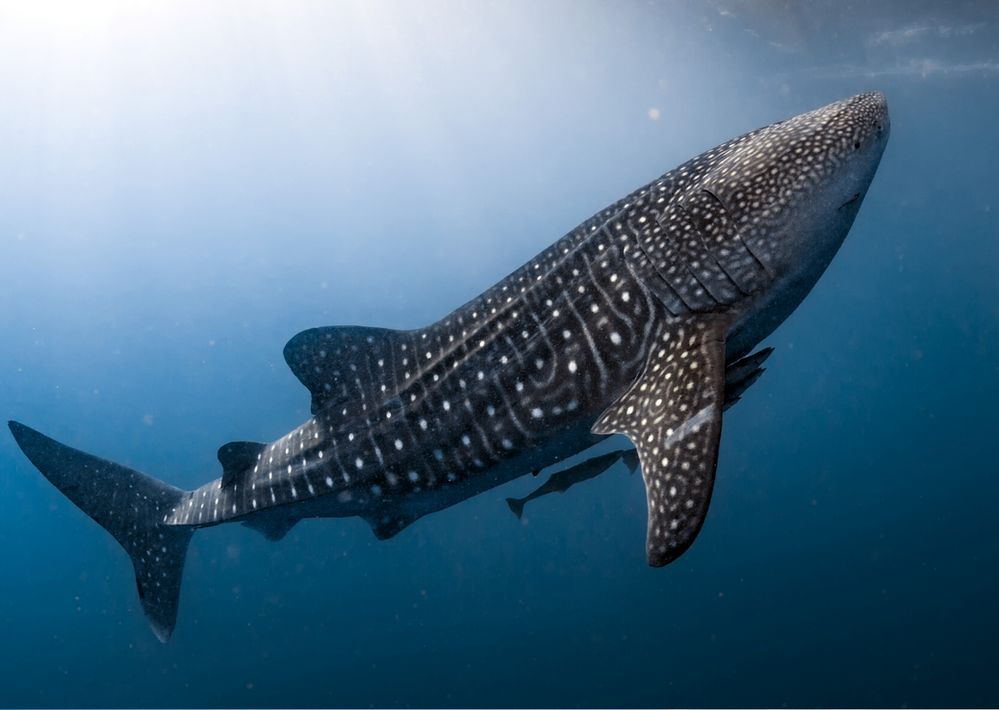
The largest fish in the sea is just one of the many animal kingdom records that whale sharks hold for their size. The largest whale shark ever recorded had a massive length of 18.8 meters.
They are typically found in the open oceans of tropical regions, but they have also been seen in lagoons and coral atolls that are a little closer to the shore. They typically consume small marine animals due to their narrow throats.
Similar to whales, whale sharks frequently filter feed, and they have mouths on the front of their heads rather than the back.
Nurse Shark
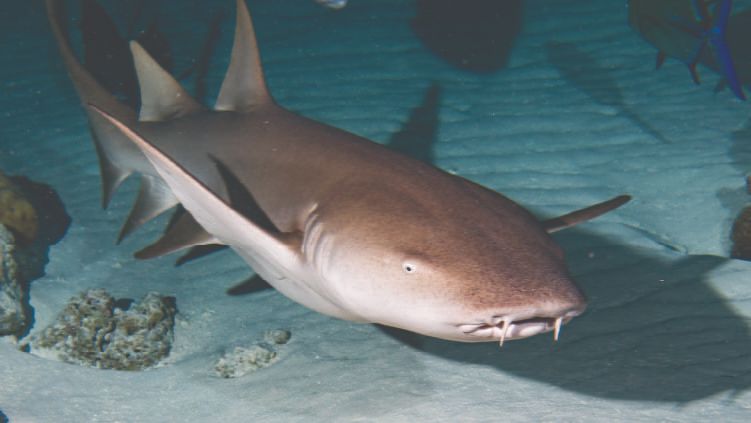
More often than any other shark species, divers and snorkelers in Aruba come into contact with nurse sharks.
These harmless, docile bottom-dwellers pass their slow days sleeping in caverns and under ledges of rock.
In recent footage of tourists swimming with sharks in Aruba, nurse sharks can be seen relaxing near the ruins of Isla di Ora, where a mangrove forest meets a shallow coral reef.
Tiger Shark
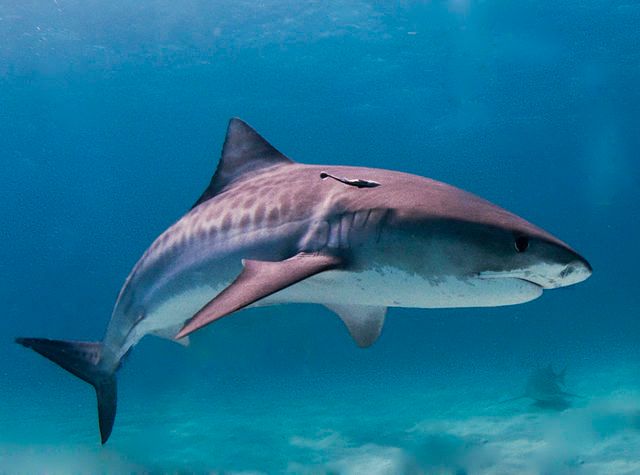
Few visitors have the opportunity to see the ferocious tiger shark, despite it being a frequent visitor to the Dutch Caribbean Islands. The few shark attacks on Aruba that have been documented are, however, believed to have been caused by it.
Five tiger sharks were found in the deep ocean off the coast of Aruba by field research using baited remote underwater video (BRUV), and one young tiger shark was found close to the neighboring island of St. Maarten.
Blacktip Reef Shark
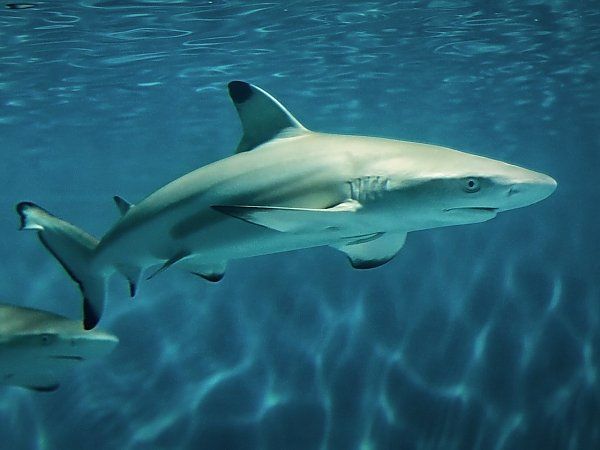
Blacktip sharks have been spotted near some of Aruba’s top diving spots. They are frequently found on coral reefs and ledges.
They can also be found, though in much lower numbers, in the nearby islands of Curacao, St. Eustatius, and Saba.”
This species, which prefers warmer, shallower waters, was once only found in the Caribbean Sea, but due to climate change, its range has expanded to include the cooler waters off the coast of New York.
Bonnethead Shark

The Bonnethead, one of the tiniest Hammerhead shark species, migrates over distances of thousands of kilometers through the warm ocean waters of the Northern Hemisphere.
In the Caribbean Sea, where it is frequently observed, it follows changes in water temperature by traveling great distances. It enjoys near-shore locations, reefs, and shallow bays much like many humans do and prefers water temperatures above 70°F (21°C).
Bull Shark
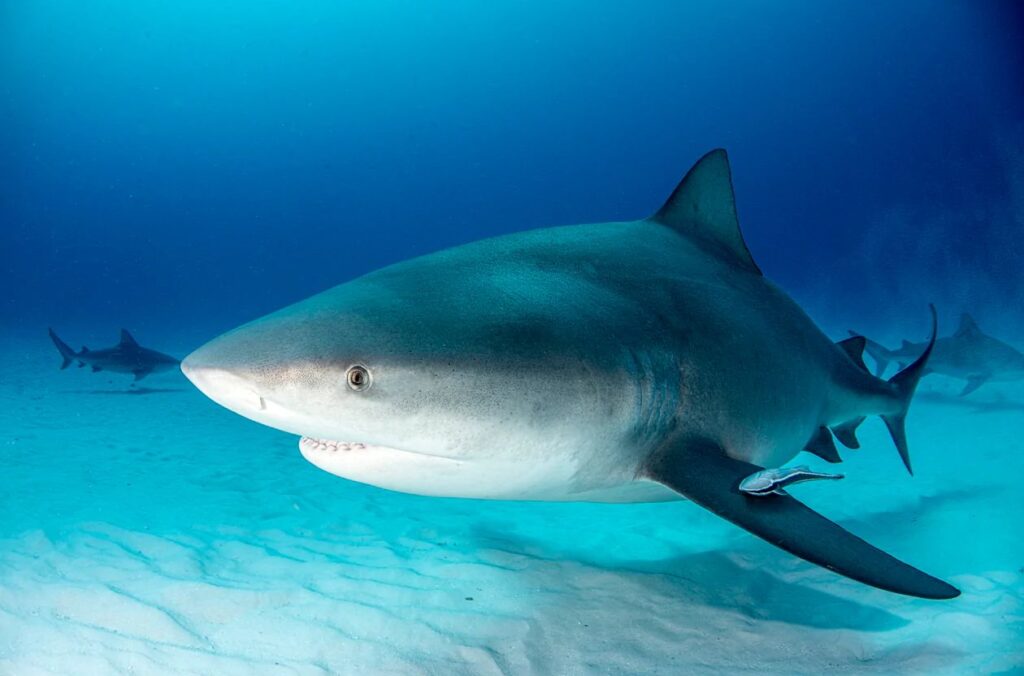
Rarely does the notoriously hostile bull shark make an appearance in the Dutch Caribbean.
There was only one bull shark in Aruba, according to baited remote underwater video footage.
The scarcity of the bull shark, which is typically found in freshwater river systems and estuaries, may be explained by the island’s lack of any rivers.
How Frequent Are Shark Attacks in Aruba?
Shark attacks are incredibly rare, but they do occasionally occur. In 2015, a Venezuelan man was killed in Aruba’s most notable shark attack while being rescued from a capsized boat. Although shark attacks have not been reported in Aruba, boaters, divers, swimmers, and snorkelers are advised to exercise caution.
You should have no problems with sharks as long as you heed the safety advice provided, are conscious of your surroundings, and give them plenty of room.
Safety Tips for A Shark Encounter
If you meet a shark in Aruba occasionally, don’t panic, here are some tips for you:
Research Local Shark Patterns
You should look into shark patterns before deciding to go for a dive, swim, or snorkel. Although it depends on the species, sharks will approach the shore at certain times of the year to give birth. Knowing this will help you make more informed decisions about your in-water activities.
Equipment
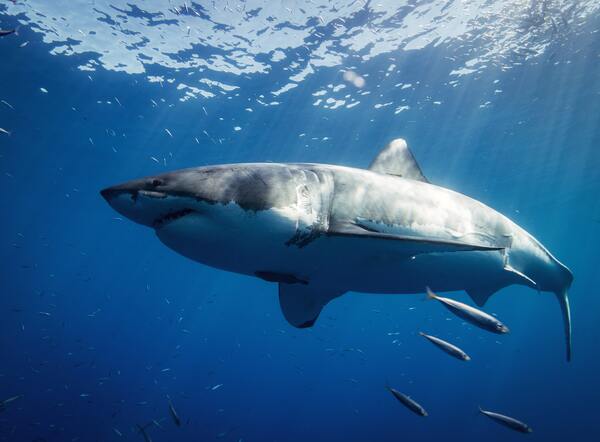
One of the best aspects of a tropical vacation is swimming and scuba diving, but it can often be difficult if you don’t have the right gear. If you plan to snorkel in deeper waters, be sure to bring fins, goggles, and of course, the essential snorkel.
If scuba diving is more your style, you might want to think about going in a group unless you are an experienced diver. By doing this, you can be sure that the equipment you’re using is the right kind and that you know exactly how to use it.
The diving instructions will also be familiar with the water and aware of what to anticipate seeing.
Clothing Colors
There’s a good reason for this one, even though it might seem a little silly at first. Sharks can only see in one color, so it’s best to stay away from bright hues like white, yellow, or neon colors that might stand out against the deep, natural hues of the ocean.
Use hues that will help you blend in with your surroundings only.
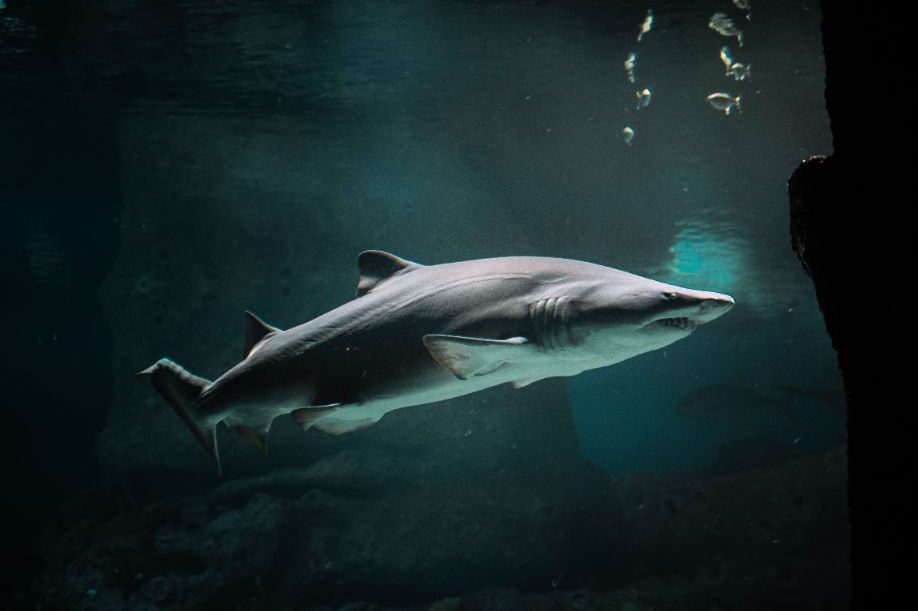
Sharks Don’t React To Human Blood
Sharks don’t actually react to human blood, despite what you may have heard. It’s one of the most prevalent shark-related myths. Numerous studies have demonstrated that sharks’ brain responses to humans are negligible to nonexistent.
In this way, if you get cut or have a cut while in the water, you won’t need to worry or panic.
Check Your Surroundings, Make Eye Contact
Try to behave like a predator as another excellent safety tip. Acting like a predator and constantly scanning your surroundings will make you appear more aware and decrease the likelihood that you will be approached by a shark, which will wait until it finds an animal’s blind spot before striking.
But what happens if a shark is encountered in Aruba? A shark would receive the wrong message if we immediately swam as quickly as we could in the opposite direction. Make eye contact instead and acknowledge the shark.
The shark needs to know that you are a predator as well, after all. Where there is one shark, there could be more, so be careful not to become too isolated. Look around for additional sharks after making your first eye contact.
Notice The Shark’s Body Language
When feeling threatened or prepared to attack, the majority of sharks will display warning signs. Sharks are naturally aggressive, so if you see one dropping its pectoral fins or holding its mouth open, slowly back away, give it room, and get out of the water as soon as you can.
Conclusion: Sharks in Aruba
Sharks are amazing aquatic creatures, and Aruba is no exception. However, shark attacks are extremely uncommon in Aruba because the sharks are found farther out in the open water and rarely approach the beaches.
While snorkeling or scuba diving in Aruba waters, you’re not likely to encounter any situations that make you feel afraid or unsafe.
FAQs
Where Can I See Sharks in Aruba?
The easternmost point of Aruba is Punta Basora, from which a slender reef extends out into the ocean for a considerable distance. On calm days, divers may spot tuna, ballyhoo, eagle rays, stingrays, barracudas, dorados, hammerhead sharks, as well as Hawksbill and Loggerhead turtles as they swim past this point of the island.
Which Caribbean Island Has the Most Sharks?
Grand Bahama Island’s West End If your idea of a relaxing week spent in the sun doesn’t include the words “shark-infested,” you might want to consider avoiding One of the beaches in the world with the highest concentration of sharks West End on Grand Bahama Island.
Is Swimming Safe in Aruba?
You should get advice before swimming because there aren’t lifeguards on almost all of the beaches in Aruba. It’s risky to swim alone. Always have enough energy to swim back to shore, and never swim alone.





